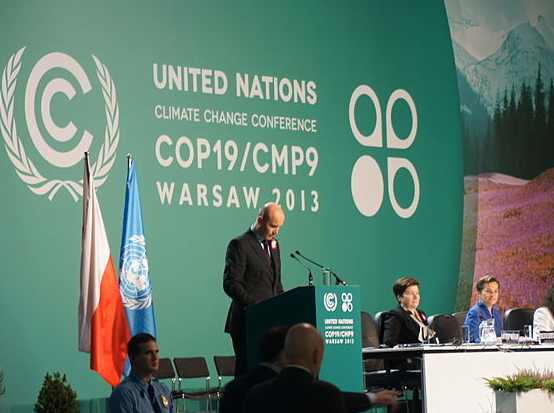(COP 19 – Warsaw, Poland). Brandon Wu of Action Aid USA points out about climate finance, “It’s really quite simple, there’s no money.”
Financing is the hot button issue affecting how to facilitate the ability of developing countries to adapt to the effects of climate change and reduce greenhouse gas emissions. Two of the main issues in this year’s negotiations at COP19 are about how to put money in the hands of those who need it the most and to secure the remainder of the promised amount from donor countries.
It all began in Copenhagen in 2009 during COP15, with developed countries pledging to deliver $100 billion to developing countries by 2020 in order to offset any future climate damage-related disasters caused by their emissions. The thinking goes that developed countries are most responsible for the emissions already in the atmosphere, so they are most responsible for helping vulnerable countries deal with the effects of climate change. The first portion of $30 billion is the ‘Fast Start Fund,’ meant to be disbursed during 2010-2012.
But with the ‘Fast Start’ period having ended, $35 billion is pledged, but only $27.1 billion has actually been given thus far. Developed countries say the target of ‘Fast Start’ was exceeded by $5 billion. In theory, this sounds like the kind of solid beginning an adaptation fund would need to reach the 2020 goal. In reality, wily accounting has done little to help those most vulnerable to the effects of climate change.
According the UNFCCC, funding provided in the Fast Start Fund (FSF) must be “new and additional,” meaning no existing money earmarked for development and aid projects can be counted towards the pledge. If this seems a large burden on developed countries, it may very well be, but they are the ones who agreed to this in 2009. Also, the amount of relief funds these countries dole out could far exceed any pledged money should Haiyan, Katrina, and Fukushima-like disasters keep occurring. Whether you believe disasters like Haiyan, Katrina, and Fukushima are caused by climate change, they are expensive to recover from. The U.S. is spending $60 billion in projects after Hurricane Sandy – so far.
Loans have been counted as approximately 48 percent of the FSF, according to World Resources Institute. In case you were wondering, loans need to be repaid. Also counted towards FSF is money for other UN agencies, private companies, and NGOs who then working with developing countries on climate change projects. Developing countries argue that funneling funds this way should not count towards the FSF total because their governments never actually see the money.
Why not include private sector funds in the FSF? Private sector companies are arguably the ones who are really responsible for climate change.
Wu tells UN Dispatch it is a matter of knowing business: “when we talk about adaptation activities, these are things where it’s going to be very difficult to turn a profit.” He notes that “infrastructural things, like building cyclone shelters in Bangladesh or building seawalls” have no real return on investment for the corporations that could afford those kinds of projects.
The private sector needs to be included in the discussion, of course. Of course, climate change is not just an environmental or financial issue. Political and social factors also make it “very hard to find a role for private sector,” Wu tells us.
Whether public or private funding, climate finance needs to have a roadmap and guarantee, not just more pledged funds. As Lidy Nacpil of NGO Jubilee South stated, “we cant have this very ad-hoc, very knee jerk responses every time there is such an extreme weather event.” But pleas for more secure financing will likely fall on deaf ears, as US Special Envoy for Climate Change Todd Stern said in October of this year, “no step change in overall levels of public funding from developed countries is likely to come anytime soon.”
